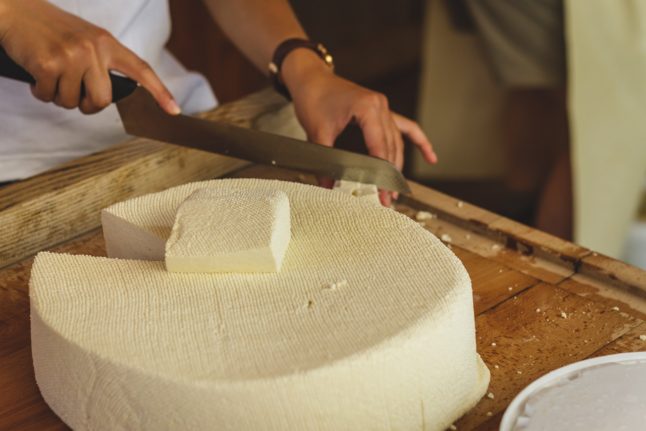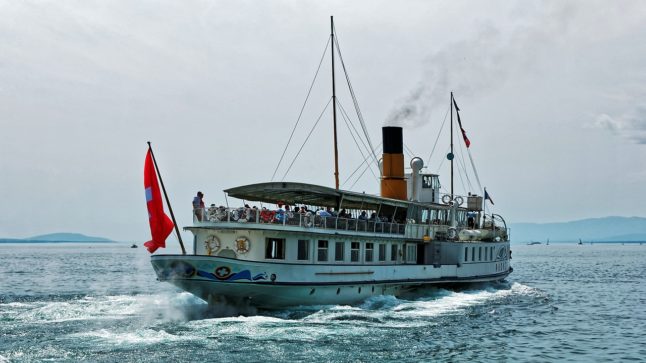Walk (carefully) the longest pedestrian suspension bridge in the Alps
High above the village of Randa in canton Valais, hangs (though thankfully not by a thread) a 500-metre long foot bridge.
This ‘walkway in the sky’ is suspended at the height of 85 metres between Grächen and Zermatt, and offers spectacular views as far as your eyes can see.
It is open from May until October, but closes (for obvious reasons) during storms.
And oh yes, heed this advice from local authorities: “It is an advantage to not be afraid of heights for the crossing.”
‘Open cellars’
If you love wine, then you will enjoy visiting the traditional ‘caves ouvertes’ or ‘offene keller’, which take place across Switzerland’s wine-making regions throughout April and May.
For a set price (varying from region to region), you will get a chance to sip locally-produced wine, while also having a chance to visit the old, quaint villages where the vintners live and harvest their grapes.

Climb the Matterhorn
This is clearly not for the faint-hearted, but if you enjoy mountaineering, climbing Switzerland’s most iconic mountain will be quite a feat and will surely impress all your social media followers.
If you are not a hard-core (read: very well trained) climber, choose the easiest route — Hörnli — that is on the Matterhorn’s northeast side.
But ‘easiest’ doesn’t mean you can just stroll up without breaking a sweat.
You need to be in excellent physical shape and be prepared for high-altitude conditions, such as very cold temperatures.
Chocolate workshop
If climbing the Matterhorn is not on your bucket list, but you still want to get the taste (literally and figuratively) of Switzerland, then learning to make chocolate could be just the ticket.
Luckily, the Cailler company, the manufacturers of the famous Swiss chocolate, runs workshops in its factory in the town of Broc, canton Fribourg.
There, you will learn how to make your own chocolate and while you’re at it, sample quite a bit of it too.
Cheese workshop
If you are more of a ‘savoury’ than ‘sweet-tooth’ person, then you may prefer the art of cheese making.
No problem: Zurich has a workshop where, “under the guidance of the master cheesemaker, the participants produce their own ‘Mutschli’ cheese, which are then left to mature for two to three months under the supervision of the cheesemaker.”

Attend Fasnacht
You have just missed it, but mark your calendars for next year, so you can attend Basel’s famous ‘Fasnacht’ carvnival.
While this is not the only carnival in Switzerland — many other cities and regions have one as well — Basel’s event is the largest of its kind in the country and is enshrined in the UNESCO Intangible Cultural Heritage List.
Though the Swiss, including the residents of Basel, are typically well-behaved, during the three days of Fasnacht, they actually go wild!
READ ALSO: What you should know about Switzerland’s largest carnival
Learn wood carving
A school in the canton of Ticino offers wood sculpting courses for beginners, so chip away!
Working with a chisel and other appropriate tools, your sculptures will, literally, take shape.
As the school explains it, “the work can be figurative or abstract.”
In other words, let your imagination be your guide.
Take a ferry across one of Switzerland’s lakes
Switzerland has about1,500 lakes, many of which can be crossed by boat.
The two largest bodies of water, Lake Geneva and Lake Constance (Bodensee), have regular ferries that connect Switzerland with France (for Lake Geneva) as well as with Germany and Austria (for Constance).
The rides are not only relaxing, but also offer breathtaking views of the surrounding areas.
Stay at a funky hotel
If you are not a fan of conventional hotels, Switzerland also has some other lodging possibilities — ranging from castles to inns dug deep into the rocky mountain sides.
Sure, you can always stay at a ‘regular’ hotel, but then you will miss on what could be not only an extraordinary, but also a unique ‘once-in-a-lifetime’ experience.
This article will whet your appetite for these funky accommodations:
READ ALSO: 10 of Switzerland’s most unforgettable hotel experiences
Visit CERN
Stepping into The European Organisation for Nuclear Research (CERN) site in Geneva is a ‘must’ for anyone interested in the mysteries of the universe.
Visiting the largest particle physics laboratory in the world, which is the home of the famous Large Hadron Collider, is hands-down one of the coolest (though probably the nerdiest too) things you can do in Switzerland.



 Please whitelist us to continue reading.
Please whitelist us to continue reading.
Member comments